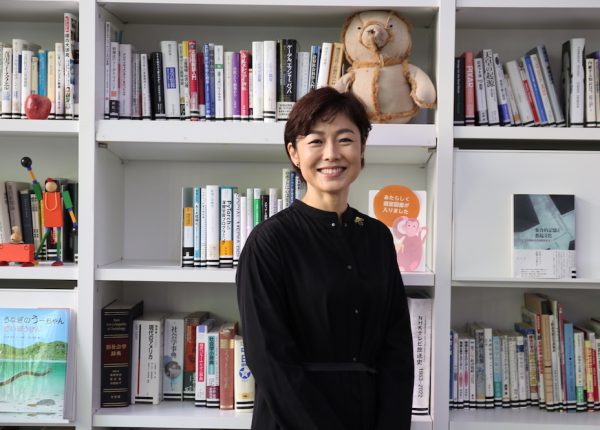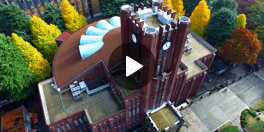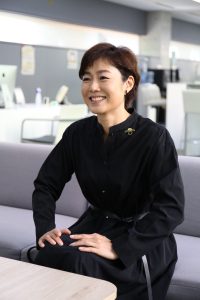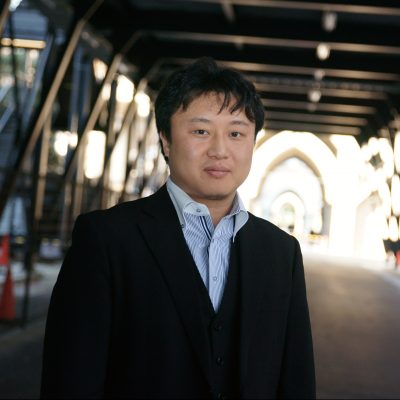
November 8, 2022
次世代への防災情報の伝え方の研究 ー フリージャーナリスト有働由美子さん、客員研究員に就任Research on effective ways to provide disaster prevention information to the young generation – Freelance journalist Yumiko Udo, Visiting researcher at CIDIR
災害時に一人でも多くの若者が身を守る行動を確実に取るために、防災情報を伝える側は平時にどういう情報発信をすべきか、またいざという時にはどのように呼びかけるのがもっとも効果的なのか。このような問題意識のもと、日本テレビ「news zero」のメインキャスターを務めるフリージャーナリストの有働由美子さんは、8月より情報学環総合防災情報研究センター(CIDIR)の客員研究員として「次世代への防災情報の伝え方」を研究しています。
防災情報の提供に強いNHKのアナウンサーとして27年のキャリアをお持ちで、現在もマスメディアで活躍する有働さんがこのテーマに向き合う背景には、これまで何度も災害時に情報を提供しながら、マスメディアならではのジレンマに直面してきたことがあります。例えば1996年の阪神大震災では、時間の経過とともに被災者とそれ以外の視聴者では必要な情報が異なることを痛感し、テレビには速報性と視聴者の最大公約数に対する発信力がある一方で、視聴者に応じた細やかな情報発信は難しいことを思い知ったといいます。また、2011年の東日本大震災は視聴者への呼びかけ方を考えるきっかけになったそうです。NHKには震度に応じた細かい呼びかけ方のフォーマットがあったそうですが、当時司会をしていた朝の情報番組の現場では、共演者の方々が視聴者に対して「テレビを観ていない方に、今起こっていることをLINEで教えてあげてください」といった、フォーマットにはない具体的な働きかけをしたところ、突然の状況の中で具体性のある呼びかけには視聴者から好意的な反応が寄せられたそうです。様々な現場での経験を通じて、有働さんは呼びかける立場として「災害情報を受け取る側に立ったときに何が必要かを練り直したい」と考えるようになりました。
フリーに転身してからは、できるだけ災害の被災地へ行き被災者の方々を取材するそうですが、災害も個性があれば、被災者にもさまざまな経験があることを実感する一方で、「対象別に説得力のある言い方をしなければ、人は行動には移さない」と強く感じるそうです。メディアを問わず、平時からどういう呼びかけをすればいざという時に身を守る行動につながるのかについても、番組の最中に語りかけ方を工夫したり、Instagramを使った防災情報発信をするなど試行錯誤されています。現場での経験値を活かしつつ、学環にて有働さんの研究は続きます。
記事:神谷説子(特任助教・編集部)
写真:柳志旼(博士課程・編集部)
Freelance journalist Yumiko Udo, known as the main anchor of NTV’s “news zero,” joined the Interfaculty Initiative in Information Studies in August as a visiting researcher at the Center for Integrated Disaster Information Research (CIDIR). Her research investigates how to effectively convey disaster prevention information, especially to the young generation. Among her particular concerns is what kind of information should be disseminated during normal times to encourage young people to take action in the event of a disaster. She also wants to look into effective ways to call upon people in times of emergency.
With more than three decades of experience working in television, including her 27-year stint as an NHK announcer, Ms. Udo says her research interests derive from facing dilemmas unique to mass media when providing disaster information. For example, during the Great Hanshin Earthquake in 1996, she realized that while television may be effective in providing breaking news to a large audience, the information required by the survivors and other viewers diverged over time, and that television was not suited to providing detailed information according to each person’s needs. Meanwhile, the Great East Japan Earthquake in 2011 became a turning point for her to consider how to effectively call on viewers to take action to protect themselves. According to Ms. Udo, NHK had a detailed format to call on viewers in accordance with the seismic intensity of the quake. But at the time, her co-hosts on a morning show went beyond the format and gave specific advice to the viewers, such as “Please use SNS and let your friends and relatives who are not watching TV know what is going on.” She noticed that viewers later responded favorably to the specificity of the appeal in the midst of a sudden situation. “The format may work to a certain extent, but I feel that we need to rethink what is really necessary from the viewpoint of the people receiving disaster information,” she said.
Since becoming a freelancer, Ms. Udo has been going to disaster-stricken areas to interview survivors. Having listened to their diverse individual stories, she strongly feels that “people will not take action unless you say things in a persuasive way to each target audience.” On TV and Instagram, Ms. Udo is constantly experimenting with different ways of communicating with the public about how to protect themselves in case of a disaster. Drawing on her experience on the ground, Ms. Udo will continue her individual research while also collaborating with members at CIDIR.
Text: Setsuko Kamiya (Project assistant professor/Editorial team)
Photos: Jimmine Yoo (Ph.D. Student/Editorial team)
English proofreading: David Buist (Project senior specialist)
主担当教員Associated Faculty Members
教授
関谷 直也
- 社会情報学コース
- 情報学環教育部
Professor
SEKIYA, Naoya
- Socio-information and communication studies course
- Undergraduate research student program



